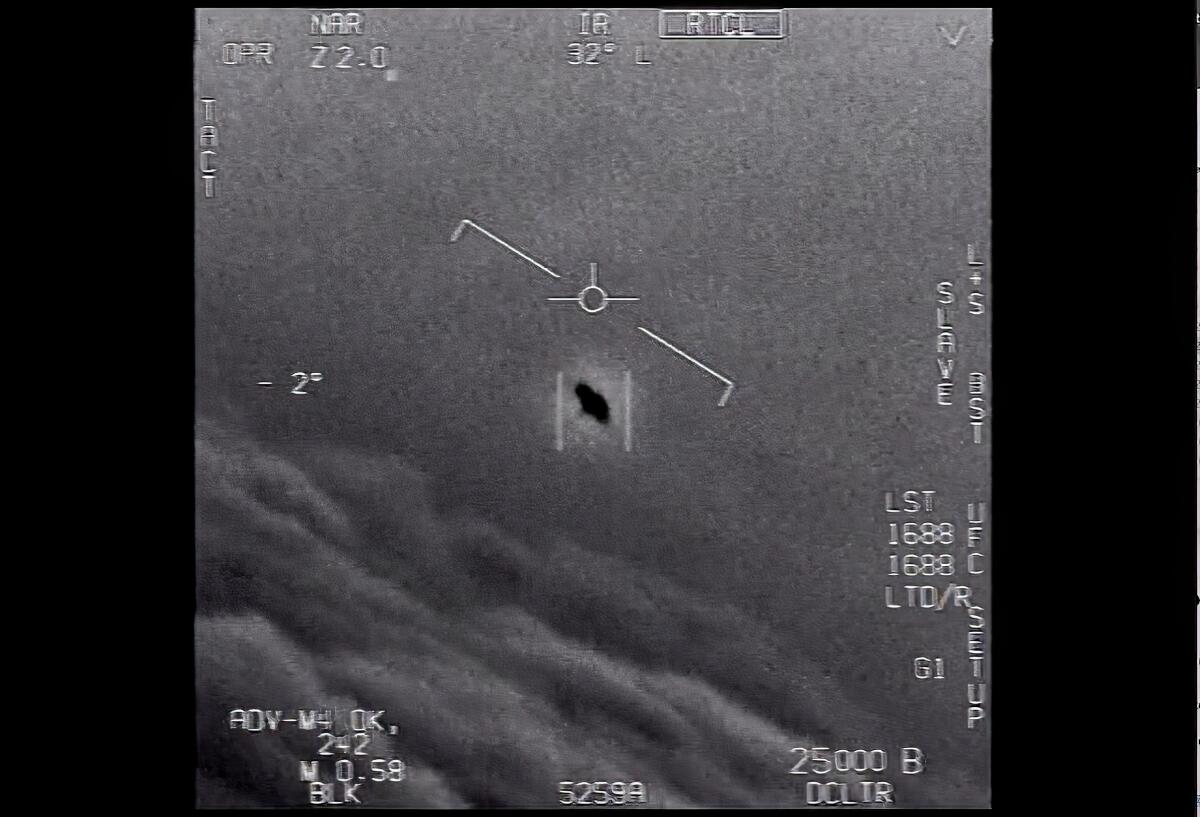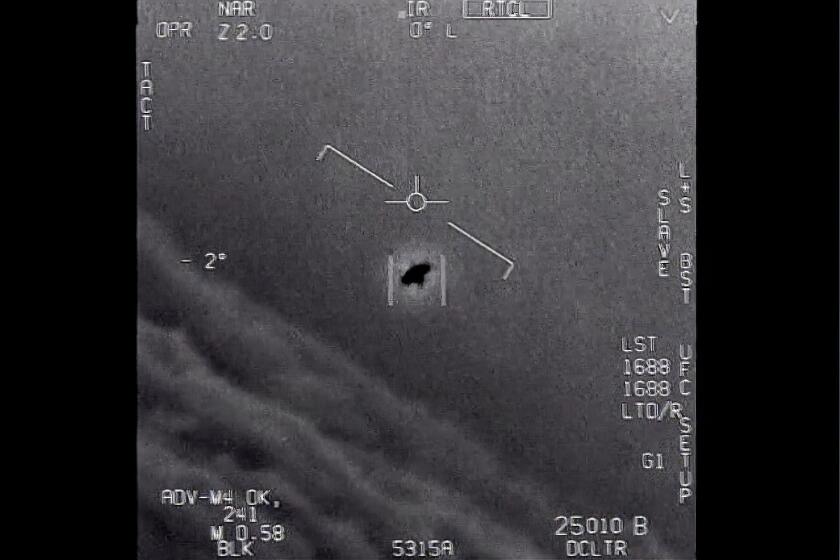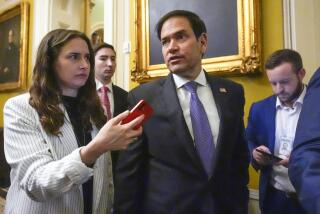Op-Ed: OK! It’s time to take UFOs seriously

- Share via
Of all the year’s political drama, the most surprising may be the U.S. government’s actions on unidentified aerial phenomena, or UAPs — better known as UFOs.
The opening act came in June, when the Pentagon and the director of national intelligence delivered an astonishing report to Congress addressing UAPs. Most of these phenomena turn out to have prosaic explanations — such as weather balloons, space debris and atmospheric effects in the sky — with a small percentage exhibiting unusual flight characteristics that suggest advanced technology.
The June report, however, found the opposite: It could account for only one of the 144 UAP sightings between 2004 and 2021 that it examined, including 80 observed with multiple sensors such as high-tech military radar and infrared cameras mounted on warplanes.
A forthcoming Pentagon report neither confirms nor rules out the possibility of UFOs. But why would they come all this way without a hello?
Take one of the most memorable sightings, caught on infrared camera in 2004. Navy pilots flying from the USS Nimitz spotted a 40-foot white object resembling a Tic Tac mint levitating erratically above the waters off the California coast. As the pilots approached, the Tic Tac — despite lacking wings or any sign of propulsion — rose to meet them midair before speeding instantly away, vanishing. The report did not conclude what the Tic Tac or any other UAPs are, and it could not attribute them to secret technology developed by the U.S. or any adversaries.
Now Congress wants answers. In November, Sen. Kirsten Gillibrand (D-N.Y.) authored legislation creating an office to study UAPs government-wide and report to Congress. Then the Defense Department tried to stake its claim to the issue, shortly after announcing the formation of its own UAP unit. Its team would investigate only UAPs spotted in sensitive military airspace, and it would operate without congressional supervision. Some criticized the half-measure as a preemptive ploy to avert oversight, though the Pentagon denies those claims.
But Gillibrand and a bipartisan bloc of lawmakers, including Sen. Marco Rubio (R-Fla.) and Rep. Ruben Gallego (D-Ariz.), were not deterred. They steered legislation through Congress — attached as an amendment to the annual defense bill, sent to President Biden’s desk Wednesday to be signed into law — that establishes a new office to study UAPs. The amendment also requires unclassified reports on UAPs delivered to Congress each year, as well as semiannual classified briefings to legislators.
The move represents the most significant public progress yet to understand UAPs. For all its dysfunction, only Congress has the institutional power and legitimacy to lead this conversation.
UAPs intersect with topics as wide-ranging as aerospace technology, national security and potential health effects on individuals exposed to these craft. No single agency has the multidisciplinary know-how or legal authority to tackle all these questions. For example, the Pentagon unit’s intended focus on military airspace would ignore the Federal Aviation Administration and civilian flight safety.
Though lacking conclusions, the report still represents a milestone in the study of UFOs, long relegated to science fiction realms and crackpots.
A comprehensive strategy from Congress is needed. The office created by the Gillibrand amendment accordingly will take a broad approach by investigating UAPs across jurisdictional lines, prioritizing areas of scientific study and requiring various agencies to collaborate — not only the Defense Department and the Federal Aviation Administration but also the Energy Department, intelligence community, NASA and others. It will develop a science plan to investigate striking physical characteristics of UAPs (like their speed) and potentially replicate any advanced UAP technologies. And the new office will seek to understand the global nature of these phenomena, directing outreach to foreign allies.
In particular, the office will analyze whether UAPs represent foreign adversarial technology or otherwise pose a threat. That should be its top priority. The June report stated that UAPs, in addition to representing a flight safety hazard, “may pose a challenge to U.S. national security.” Given the regular sightings in military airspace — and the apparent connection between UAPs and nuclear technology — national security concerns are paramount.
In setting up this office, Congress has legitimized the long-ridiculed topic of UAPs. Yet its work does not end there. It must ensure that the office receives adequate funding and make clear that the office should be led by a civilian director with the expertise necessary to tackle these issues and cut through the Pentagon’s red tape.
Of course, the perspectives of defense and intelligence officials will be crucial. But the Pentagon has a long history of obfuscating work relating to UAPs, whereas Congress can promote transparency. Once the office has delivered its first unclassified report, Congress should hold public hearings to discuss its findings.
Now that legislators have marshaled action on UAPs, they need to make sure the new office does not become shrouded in secrecy.
Dillon Guthrie is an attorney and served as a counsel at the Federal Reserve Bank of New York, an advisor on the Senate Committee on Foreign Relations and a legislative aide to then-Sen. John Kerry.
More to Read
A cure for the common opinion
Get thought-provoking perspectives with our weekly newsletter.
You may occasionally receive promotional content from the Los Angeles Times.












